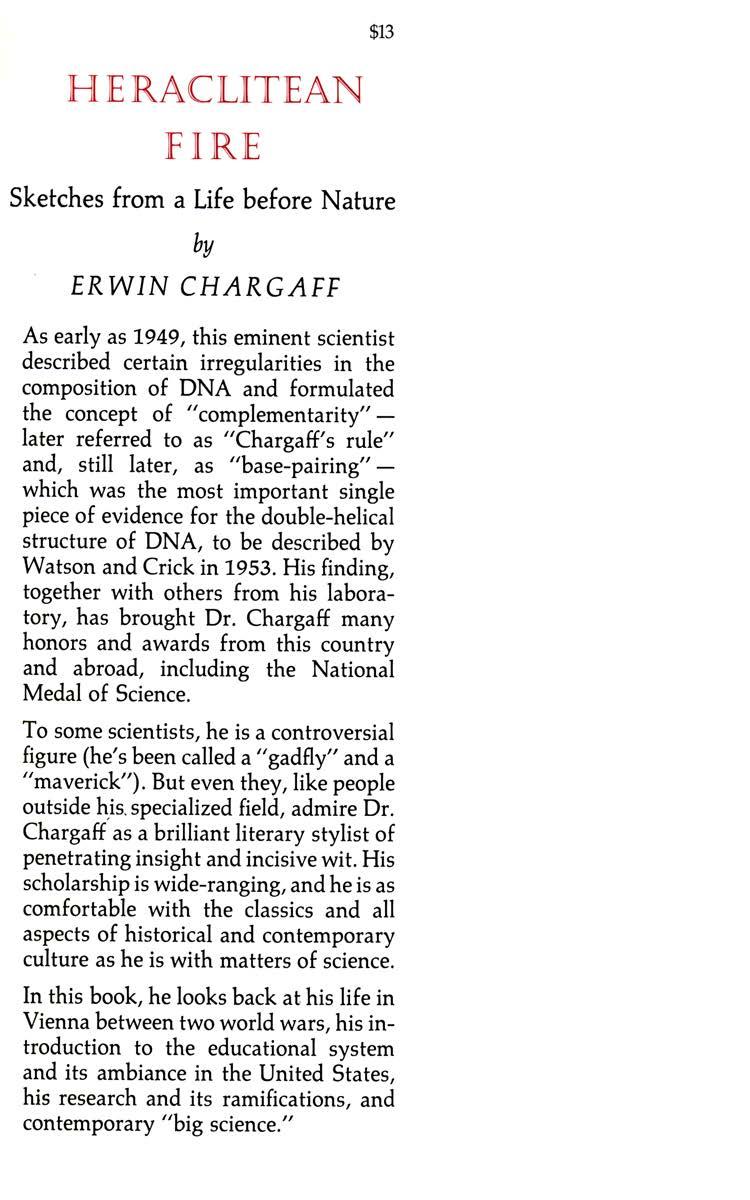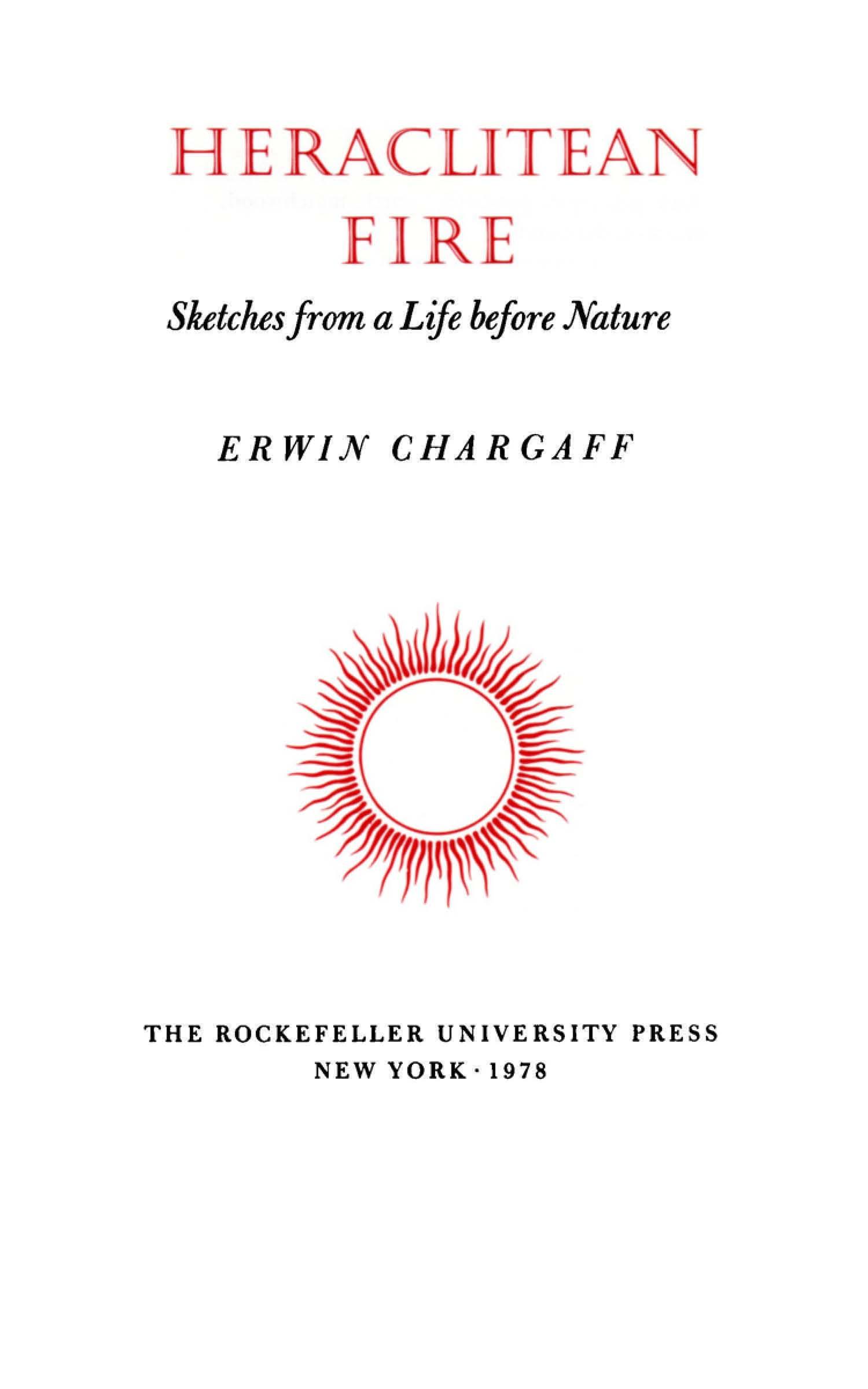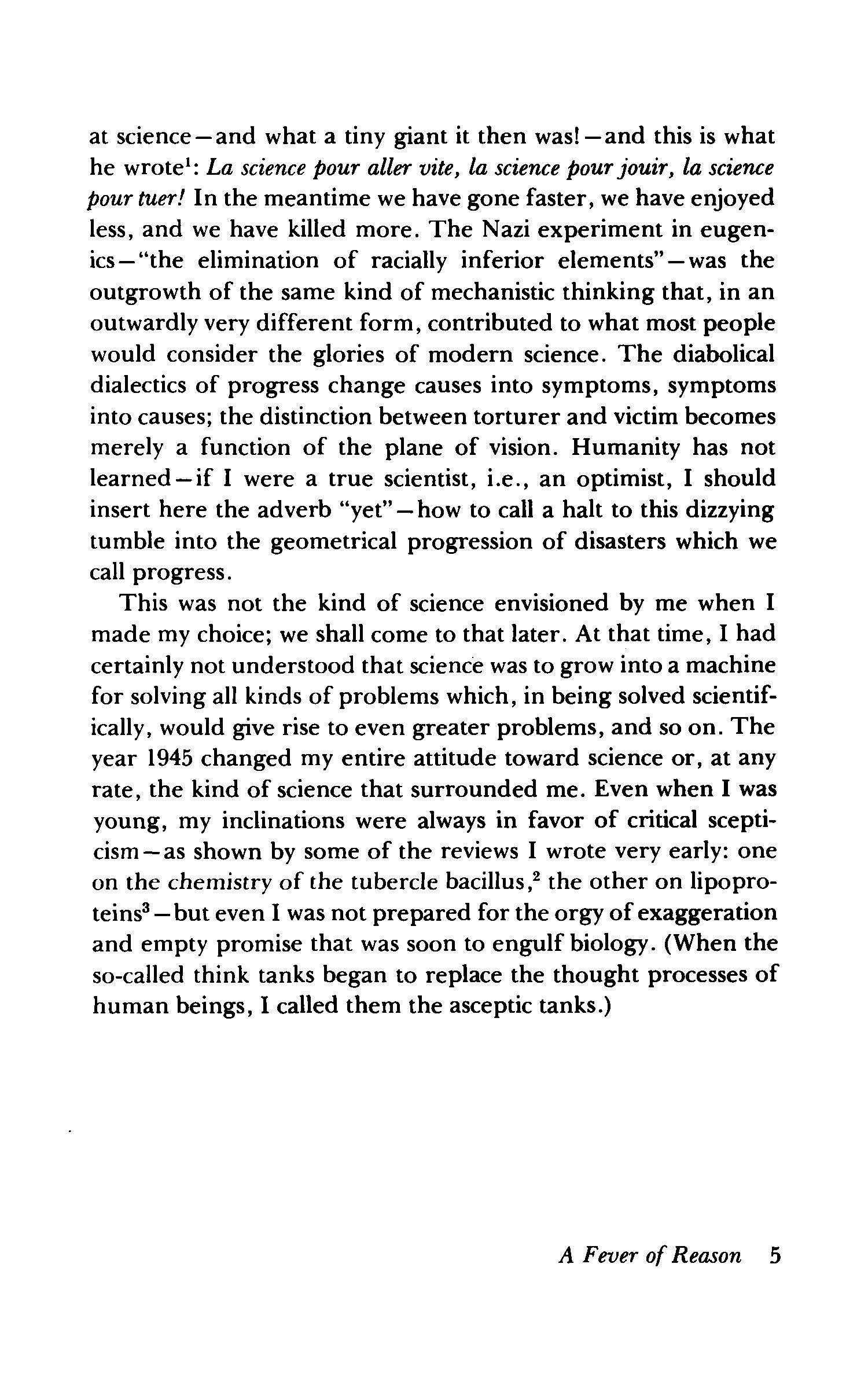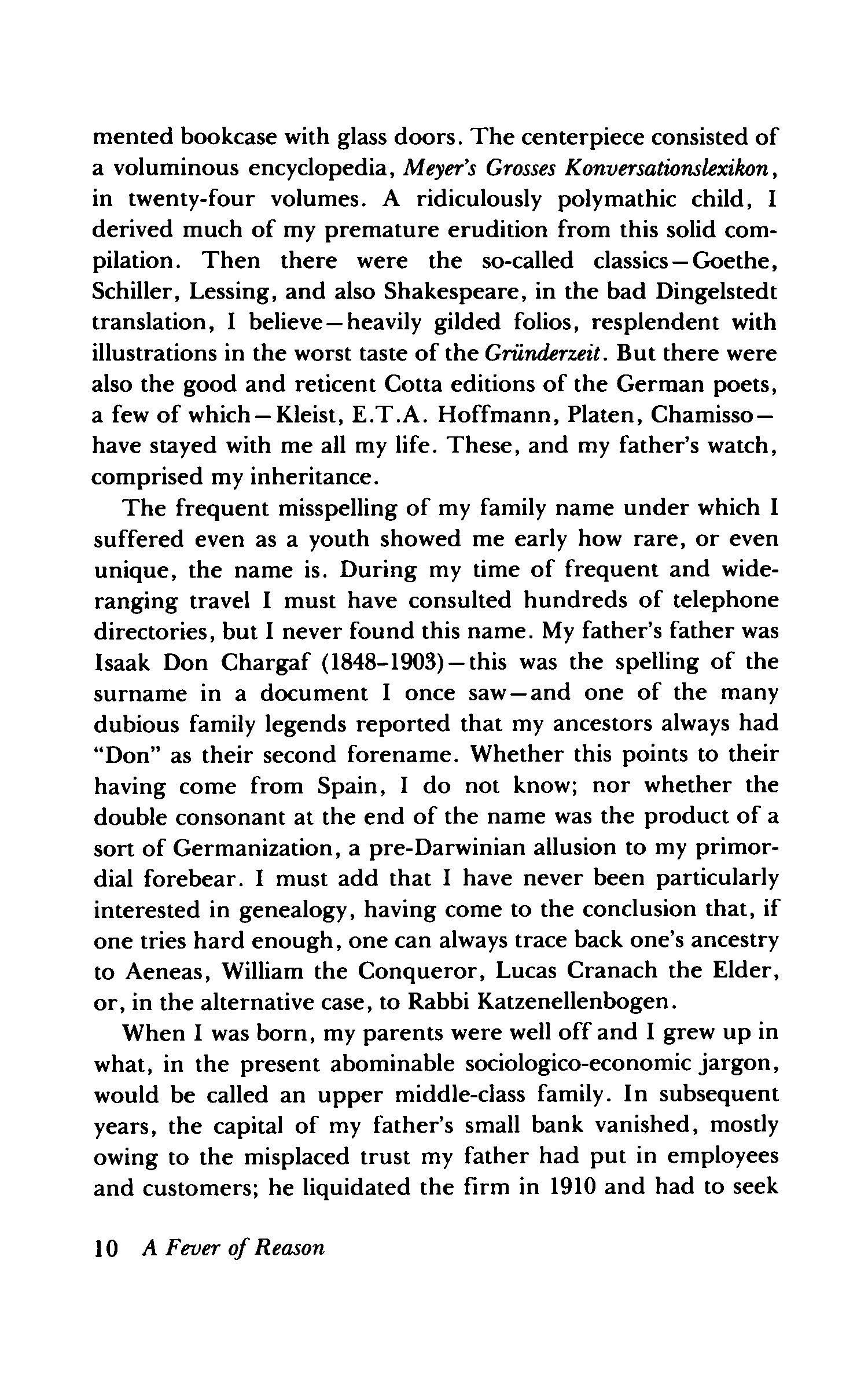Heraclitean Fire
Heraclitean Fire
By: Erwin Chargaff
Title information
As early as 1949, Erwin Chargaff described certain irregularities in the composition of DNA and formulated the concept of "complementarity"—later referred to as "Chargaff's rule" and, still later, as "base-pairing"—which was the most important single piece of evidence for the double-helical structure of DNA, to be described by Watson and Crick in 1953. His finding, together with others from his laboratory, has brought Dr. Chargaff many honors and awards from his country and abroad, including the National Medal of Science. To some scientists, he is a controversial figure (he's been called a "gadfly" and a "maverick"). But even they, like people outside his specialized field, admire Dr. Chargaff as a brilliant literary stylist of penetrating insight and incisive wit. His scholarship is wide-ranging, and he is as comfortable with the classics and all aspects of historical and contemporary culture as he is with matters of science. In this book, he looks back at his life in Vienna between two world wars, his introduction to the educational system and its ambiance in the United States, his research and its ramifications, and contemporary "big science."
Erwin Chargaff
Erwin Chargaff was educated in Austria and received his doctorate in chemistry from the University of Vienna. In addition to the National Medal of Science, Dr. Chargaff was the recipient of the Pasteur, Carl Neuberg, and Gregor Mendel medals as well as the Mayer Prize (French Academy of Sciences), the Heineken Prize (Royal Netherland Academy of Sciences), and the Bertner Foundation Award. He was a member of several academies, including the National Academy of Sciences, and held honorary doctorates from Columbia University and the University of Basel. He died in 2002.
Jacques Barzun, University Professor Emeritus, Columbia
"Autobiographies by scientists form a small but select genre, of which the latest and surely one of the best is Erwin Chargaff's Heraclitean Fire. Its artfully discontinuous form, its passion alternating with detachment, and its sardonic humor put it in a class apart, where the perplexities and the resigned wisdom of the twentieth-century man of science are mirrored as never before." --Jacques Barzun, University Professor Emeritus, Columbia University


















